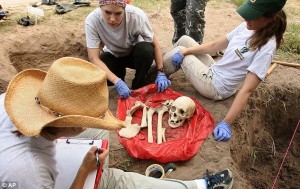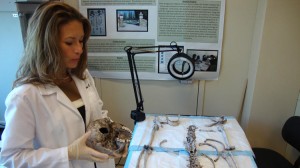Inocente is a 15 year old undocumented immigrant who has lived homeless for the past 9 years. While confined to the limitations of her situation, Inocente uses artistic expression to convey her emotions, temporarily escaping the adversity that surrounds her. The documentary follows Inocente’s daily life as she interacts with her family and produces original artwork for a community show. Inocente’s life sheds new light onto the bleak stereotypes of homelessness and undocumented immigrants.
Inocente immerses her viewers into a major problem for undocumented immigrant families, domestic abuse. When asked about the major dangers undocumented immigrant families face, several thoughts emerge: being smuggled across the border; surviving the dangers deserts of the Southwest; being discovered and deported; and financial issues. These prevalent stereotypes dominate the discussion about undocumented immigrants, closing the door on the many other problems they face. Inocente shares her grim story of domestic abuse that ultimately culminated with the deportation of her father and emotional distance from her mother. This look into Inocente’s life shows that even though they are a family of undocumented immigrants, they are still a regular family with problems reflected in other American households. Thinking of undocumented immigrants as only being underpaid workers constantly avoiding deportation is a narrow-minded stereotype and Inocente’s story of her family struggles shows that undocumented immigrants are regular people too.
Inocente’s colorful expression in her artwork and passion for becoming an artist breaks from traditional stereotype of a homeless person. When thinking of a homeless person, the first images that come to mind are: dirty old clothing, expressionless faces, and begging for money on the sidewalk. This stereotype of the homeless was proven wrong within the first 30 seconds of this documentary seeing Inocente apply her daily make-up and expressing her inner creativity with unique designs and bright colors. Instead of the dark and gloomy ideas that are commonly associated with homelessness, Inocente paints bright and cartoon-like characters on giant canvases, creating her own happy world. She perseveres to better herself in other facets of her life by attending school and working to legally emancipate herself from her mother. These examples of Inocente’s drive for a better life completely shatter my previous ill-informed stereotype, showing me the realities that life as a homeless person go beyond people just sitting on sidewalks with cardboard signs begging for money.
Inocente’s story serves as a great example to the ignorance of stereotypes and the value of peeking into a 15 year old’s life to overcome those misconceptions. Although being homeless and an undocumented immigrant are forever apart of Inocente’s life, she does not let those aspects detract from her dreams of becoming an artist and being happy.
Additional Links
Published study that address how the little data in the legal, medical, and social science research fields for intimate partner violence against immigrant women: (a) increase their vulnerability for abuse; (b) are used by batterers to control and abuse immigrant women; (c) create barriers to women seeking and receiving help:
http://vaw.sagepub.com/content/8/3/367.short
Article addressing the surge of child homelessness in America:
http://www.huffingtonpost.com/2014/11/17/child-homelessless-us_n_6169994.html
Sources
“Inocente” documentary
Picture Links
http://athenacinema.com/wp-content/uploads/2014/09/inocente.jpg







